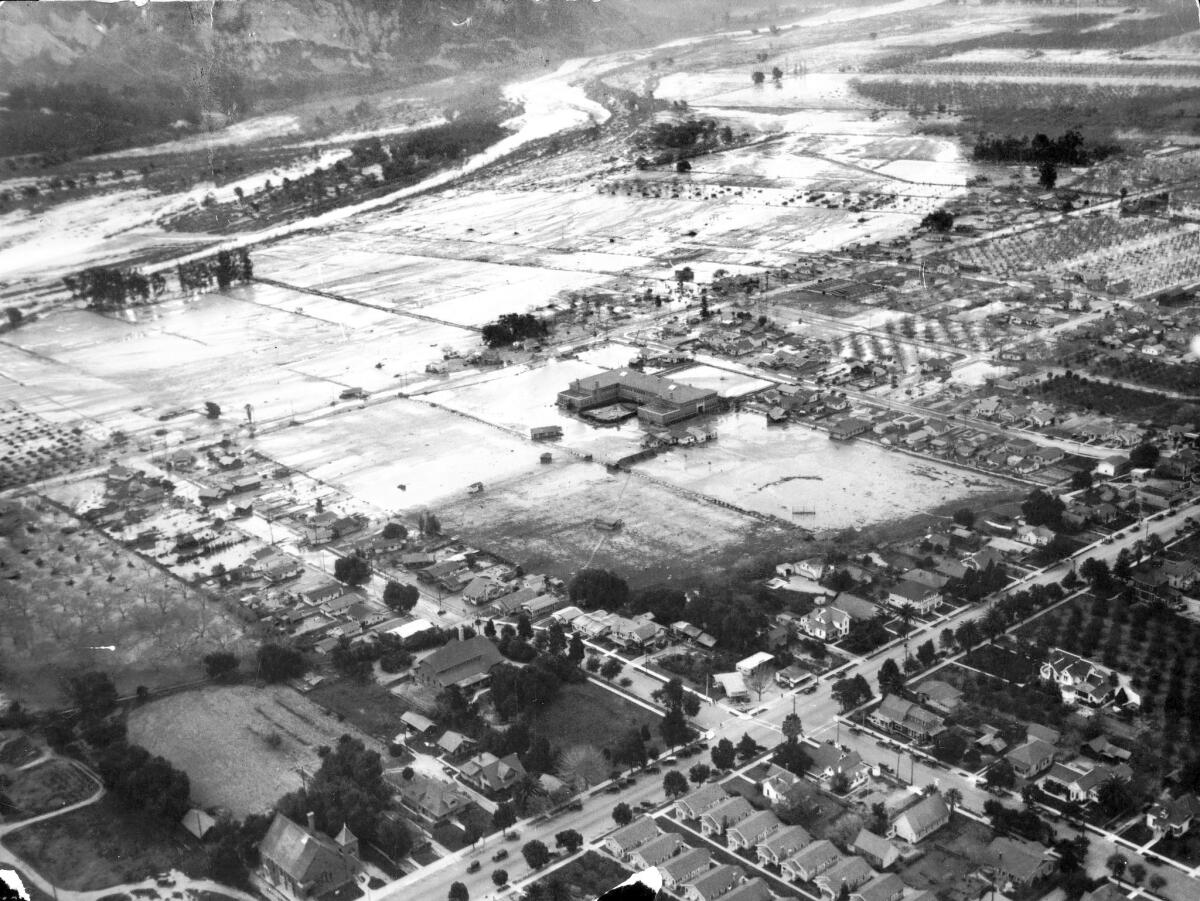California Retrospective: St. Francis Dam collapse left a trail of death and destruction
- Share via
This month marks a grim anniversary in Southern California.
The collapse of the St. Francis Dam on March 12, 1928, is, in terms of loss of life, the second-greatest disaster in California history. The first was the San Francisco earthquake and fire of 1906. The death toll from the collapse varies from about 400 to more than 600.
Here’s a primer on how the disaster unfolded from coverage in The Times:
From the day the St. Francis Dam opened in 1926, it leaked. The folks in the farm towns downstream used to joke that they’d see you later “if the dam don’t break.”
Built by William Mulholland, known as the father of Los Angeles’ municipal water system, the 1,300-foot span of concrete in San Francisquito Canyon held more than 12 billion gallons — a year’s supply for the entire city about 50 miles to the south. …
The dam wasn’t even 2 years old when it sprang new, muddy leaks on the morning of March 12, 1928. The dam keeper, Tony Harnischfeger, summoned Mulholland and Mulholland’s chief assistant, Harvey Van Norman, who inspected the dam and vouched for its safety.
Twelve hours later, Harnischfeger and his 6-year-old son, Coder, were among the first to die — followed by more than 450 others. …

It was three minutes before midnight when the dam broke, freeing a 10-story-high avalanche of water to sweep 54 miles west to the ocean. It would take 5 1/2 hours to get there, but no official warning would be sounded for considerably more than an hour after the rupture.
Water engulfed whole towns, dozens of ranches, an Edison construction camp, the Harry Carey Indian reservation and trading post, and DWP Powerhouse No. 2. It swept into Castaic Junction and along the Santa Clara River bed to Piru, Fillmore, Santa Paula, Saticoy and, finally, the sea.
It demolished 1,200 houses, washed out 10 bridges and knocked out power lines. Bodies would wash ashore as far south as San Diego.
One of the first photographers on scene was the Times’ George Watson. Years later in an interview for the Watson Family Photographic Archive, he described his experience.
Watson explained that he had photographed the dam about a week before the collapse, en route to visit his brother in Hughes Lake.
Then on the night of March 12-13, 1928, Watson was dispatched to Castaic. “There was an operator on The Times called Lucille,” says Watson. “She was a pretty wide-awake gal. She knew where every Times employee was, anytime of day or night. She could get anybody on the phone. And she called me about a quarter to 12 that night.”
“And she says, ‘George, I think there’s going to be trouble up on the San Francisquito dam.’ She says, ‘I’ve been calling the operators all over the little towns, and I can’t get through. I think there’s something going on,’ she says.” (The St. Francis Dam was sometimes referred to by the canyon name.)
Watson said he dashed out to Castaic, getting there about 1 a.m. “Water was still going out,” Watson said. “We could hear people yelling, out in the stream.”
But because “it was so darn dark,” Watson had to wait till dawn to take photos.
“We sat around there till dawn, and [Harvey] Van Norman, chief engineer for Bill Mulholland, came up with a truck and said he’d take us up to the dam,” Watson said. “So we got in this truck and went up there. We could barely see it. I put my camera on a tripod, opened up my lens wide to f4.5 and gave it 2-3 seconds exposure.”
“I got pictures of the water still going out,” he said. “Then I made some more close-ups.”
Watson said he stayed at the St. Francis Dam site for two more days, sending his film back to Los Angeles. He said rocks and pieces of the dam “washed down the valley for half a mile” and were “twice as big as a two-story house.”
More to Read
Sign up for Essential California
The most important California stories and recommendations in your inbox every morning.
You may occasionally receive promotional content from the Los Angeles Times.










